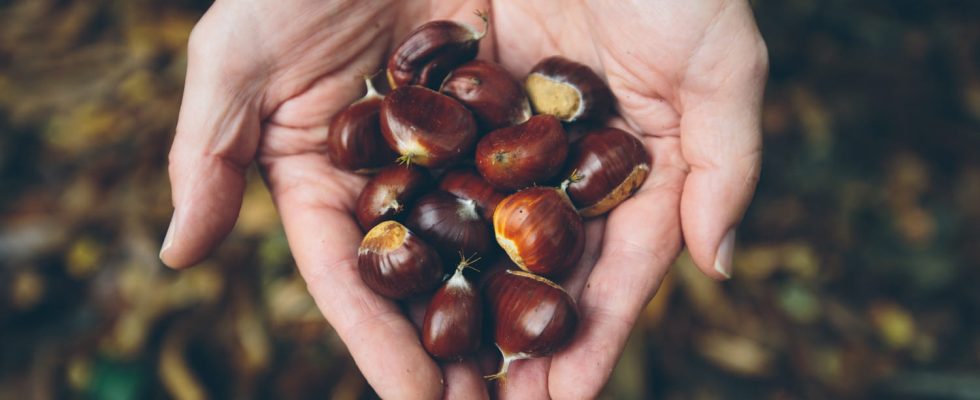It’s autumn, the season of chestnuts and chestnuts! But be careful not to confuse them because one can be eaten while the other is considered toxic.
More’1 in 10 plant confusion concerns the chestnuts and chestnuts, according to the result of a study on plant confusions published by ANSES. For example, those called “glazed chestnuts”, “hot chestnuts”, “chestnut cream”, “turkey with chestnuts”… are fake friends and abuse of language! These “chestnuts” that we find on market stalls in autumn or winter are in fact big ones chestnuts of culture which come from the chestnut tree and who are edible (so we can eat them).
Which chestnut or chestnut is edible and eaten?
► The chestnutwhether cultivated or wild, is edible And eat. The chestnut matures in September and falls from the trees until mid-November. To know if the fruit is ripe, the bug should be brown and already partially open.
► Horse chestnut which grows and falls from chestnut tree is toxic, it is not edible and cannot be eaten. Eating it can cause digestive problems such as abdominal pain, nausea, vomiting, or throat irritation…
What are the differences to distinguish brown and chestnut?
| Chestnut | Indian brown) | |
|---|---|---|
| TREE | Fruit of chestnut (Castanea sativa) | Fruit of the chestnut tree (Aesculus hippocastanum) |
| Edible or not? | YES because edible | NO because toxic |
| Appearance of the bug | Bug Brownbristling with numerous long spines | Thick bug, greenprovided with small, spaced and short peaks |
| Number of fruits per bug | 2 to 3 fruits per bug | 1 chestnut per bug |
| Appearance of the fruit | Small, flattened and triangular Little “puff” on top of the fruit | Big and rounded Absence of “puff” |
| Interior of the fruit | Mealy and whitish flesh | White flesh |
Photo of chestnut and chestnut
Did you just pick up some fruit on a walk? To avoid confusion between chestnut and chestnut and thus poisoning, observe the tree from which the fruit comes:
- If the tree is in a wood, a forest or an orchard: it is very often a chestnut.
- If the tree is located in the city, in a park, in an alley or in the courtyard of a school: it is very often a chestnut tree.
Appearance of the leaves
- If the leaves of the tree are simple, without leaflets, elongated with sharp teeth: it is a chestnut.
- If the leaves of the tree are palmate with 5 (or 7) leaflets (small leaves which form a compound leaf, with a “webbed” appearance): this is a chestnut tree.
What to do in case of chestnut poisoning?
By mistake, you ate a chestnut instead of a chestnut:
- Keep leftover meals or a photograph of the harvest to facilitate identification in the event of poisoning.
- In case of digestive problems, throat irritation, vomiting… Call a Poison Control Center or consult a doctor.
- In the event of a medical emergency, call 15, 112 or go directly to the Emergency service nearest to you.


